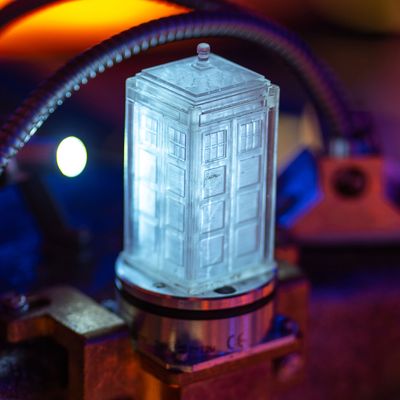
New Doctor, new … well, just about everything time and space has to offer. With the monumental arrival of Jodie Whittaker as Doctor Who’s latest Time Lord, gender-flipping (and three companions!) wasn’t the only thing showrunner Chris Chibnall wanted to change when the show’s 11th season finally made its debut. It also got a new theme song, new opening visuals, and, as viewers saw in the second episode, a brand spankin’ new TARDIS that beautifully utilizes light and color à la the school of James Turrell. Production designer Arwel Wyn Jones was nice enough to break down some of the key elements of this new, postmodern TARDIS for us, custard-cream dispenser and all.
The color scheme
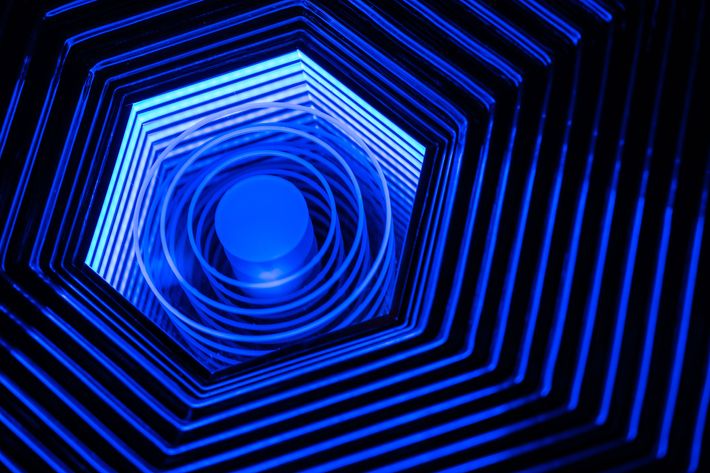
Uninviting brown palettes? That’s so Steven Moffat–era Who. “We wanted to make the universe feel a warm place, so it seemed perfect to give the TARDIS a warm color at its heart,” Wyn Jones explained. “Then, as we played with the colors, we found that the teal blue seemed to work best in the infinity mirrors as a complement.” Amber hues also naturally shine through, quite literally, when the door opens to expose exterior elements.
The walls
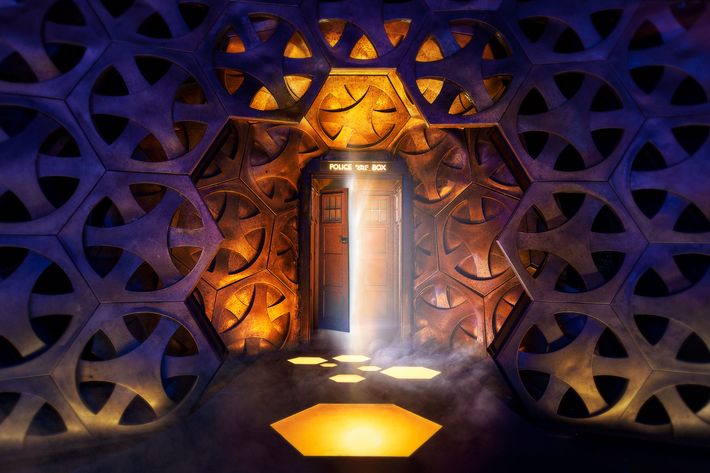
The art of electricity and magnetic fields were key influences in the TARDIS design scheme, even if the walls don’t spark as much as, say, the main console. As Wyn Jones visualized: “This was more a mesh than gears — a fractal interweaving mesh to convey the idea of containing and controlling an incredible power, very much like a Faraday cage.”
The floor
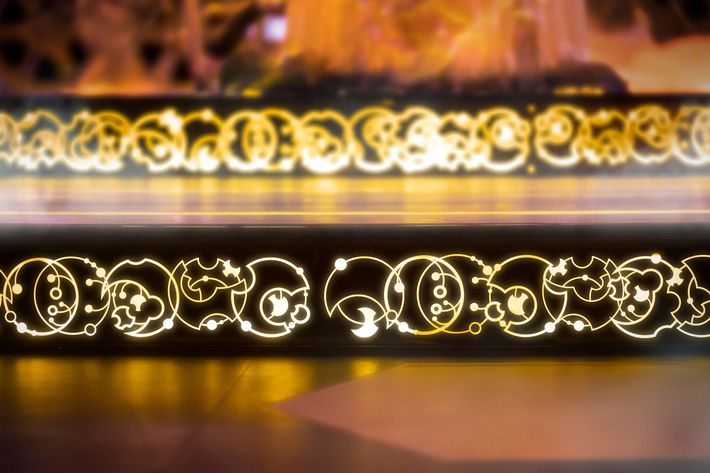
Beyond the razzle dazzle of the Thirteenth Doctor’s new ride, it’s the little details that go a long way. The next time the TARDIS graces your screen, take a look at what’s below everyone’s feet: The intricacies of the floor design relate to winter, of all things. “The floor pattern is a play on a snowflake,” Wyn Jones said. “It gave us a very cool six-sided fractal pattern that tied into the whole well.”
The console
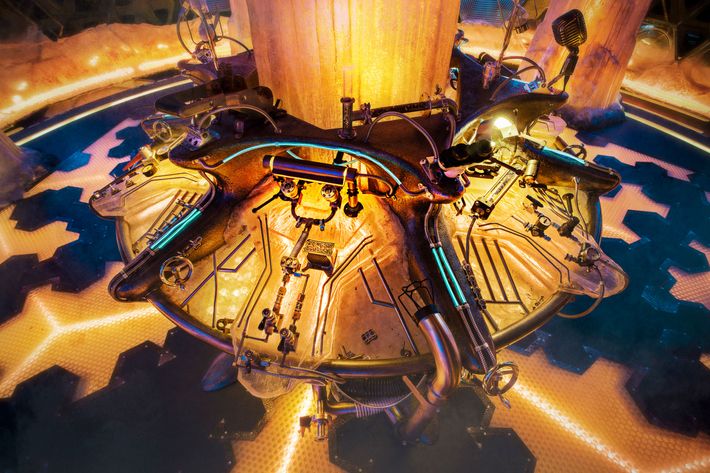
Jodie Whittaker specifically requested a console — which is by all means the TARDIS’s pièce de résistance — to allow her to be as kinetic as possible with her movements, a request the production team honored. “The central console has always had all manner of controls on it,” Wyn Jones explained. “In this incarnation, I wanted it to feel like it was engineering rather than electronics that controlled it — the flow of gases and fluids and energy controlled by valves, taps, and levers rather than tapping a keyboard.”
The custard-cream dispenser
Every TARDIS needs to have at least one defining element for its Doctor, and that, ultimately, came in the form of a treat-spewing dispenser — which was fitted to Whittaker’s personal taste buds. “I wanted to make the console feel like it was Jodie’s,” Wyn Jones explained. “I’d started designing the TARDIS before I knew it was Jodie playing the Doctor, and then when I was at the filming of the regeneration, I found out that custard creams were her favorite biscuit, and an idea was born!”


